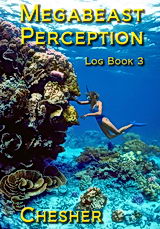Atomic Communications
An electron and a proton intercommunicate to become an atom of hydrogen. Electrons belong to a class
of sub-atomic particles called leptons. Protons are up and down quarks
fused together by the strong force created by intercommunications
of gluons.
The hydrogen atom is not an electron and it is not a proton, it is the emergent intercommunication of these two sub-atomic particles when they lock together in a new relationship. The communication web of an electron and a proton has characteristics and behavior totally different from an electron or a proton. Hydrogen atoms are the most abundant element in the universe, comprising, for example, 92.1% of the sun.
Hydrogen atoms intercommunicate in stars, forced together by gravity to form pressures 340 billion times as great as Earth's air pressure at sea level. Temperatures reach 15,000,000º Celsius. Hydrogen atoms in the sun are stripped of their electrons and four protons fuse together to form one helium nucleus. The helium nucleus is slightly less massive than the four protons and the excess mass is expelled as energy, carried to the surface of the sun by convection, and released as heat and light. 700 million tons of hydrogen are converted to helium every second. Helium makes up another 7.8% of the elements in the sun.
|
|
The remaining 92 stable natural elements making up the residual 0.1% of the sun, are more elaborate communications of electrons and protons forced into stable relationships in the high pressures and temperatures. After hydrogen and helium, the most common elements, throughout the universe, are (in order of abundance) oxygen, carbon, and nitrogen.
Elements pressed into stable relationships in previous stars and released into space by explosions marking the end of the star's life, congeal to form planets, including the Earth.
Following the formation of planets, solar radiation had something to communicate with. Solar radiation struck the elements in a pulsing wave, ranging in a smooth curve from full darkness to full radiation as the planet spun on its axis. This pulsing energy source created the conditions required to arrange the most common elements of hydrogen, oxygen, carbon and nitrogen into living molecules.
Atoms communicate to form molecules. We commonly make the mental mistake of considering water as two atoms of hydrogen and one atom of oxygen.
Hydrogen and Oxygen are both colorless, odorless gasses, each with its own peculiar characteristics. If you fill a container with hydrogen and oxygen gasses, you wind up with a container full of hydrogen and oxygen gasses.
If, however, you then add energy - such as a spark - the hydrogen and oxygen will emerge as a new relationship, and orbit each other in such a way as to create the molecule we think of as water.
Water is not the hydrogen and oxygen gasses, just as a waterspout is not air and water vapor.
Water is the emergent interaction of hydrogen and oxygen in a new and different relationship, one that can be disrupted by stopping the communication with electrical interference to reproduce hydrogen and oxygen gasses again. Water is a quantum jump (with no in-between steps) from hydrogen and oxygen.
Fructose (left) and Glucose (right) are organic (living) molecules. Both are made of exactly the same elements, 6 carbon atoms, 12 hydrogen atoms, and 6 oxygen atoms, but they are not the same sugars, and have different properties. Each kind of sugar is a very specific exchange of information between the elements - a communication web where form and function is inherent in the kind and pattern of information exchange between the atoms of carbon, oxygen and hydrogen. Sugar is not carbon. Sugar is not oxygen. Nor is it hydrogen.
Organic molecules are primarily the intercommunications of the most common elements of the universe, hydrogen, carbon, nitrogen and oxygen. There are thousands of different organic chemicals, each forming an important link in the communication web of living organisms, all made from combinations of the same atoms in different associations. Their functions depend on a variety of characteristics such as their size, shape, stability, electronic state, rate and ease of oscillation or phase change, and even their magnetic polarity.
The elements move through the living creatures in a constant flood.
Living beings are not the elements - they are the relationships between these elements as they move through the webs of communications created by the thread of awareness in chaos.
Find out how bacteria communicate using organic molecules.
Discover how cells communicate.



